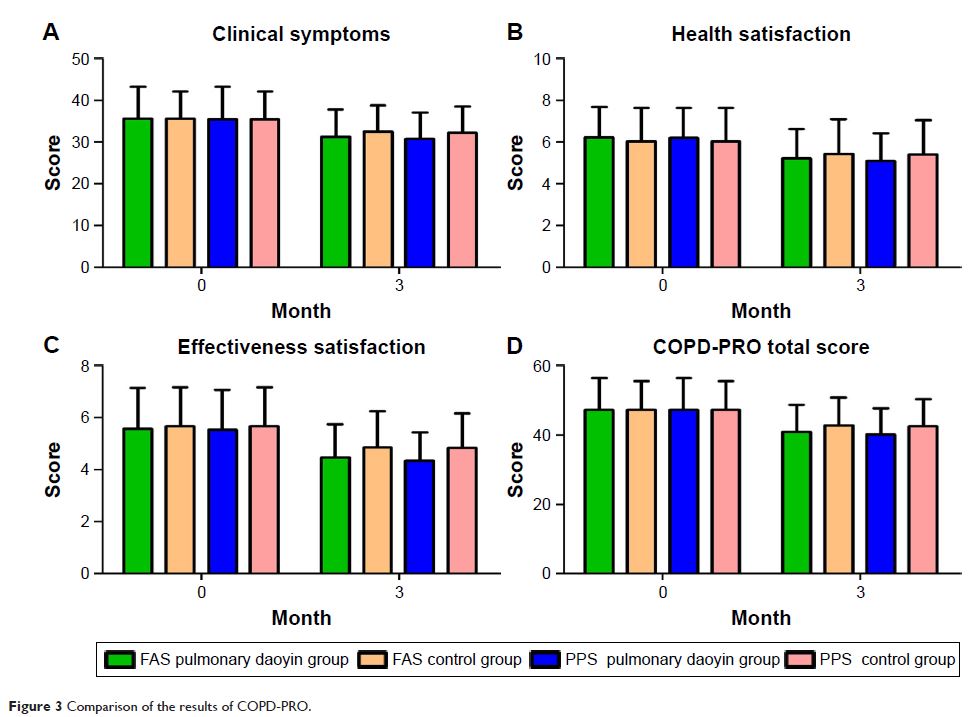9 0 6 7 6
论文已发表
注册即可获取德孚的最新动态
IF 收录期刊
- 2.6 Breast Cancer (Dove Med Press)
- 3.9 Clin Epidemiol
- 3.3 Cancer Manag Res
- 3.9 Infect Drug Resist
- 3.6 Clin Interv Aging
- 4.8 Drug Des Dev Ther
- 2.8 Int J Chronic Obstr
- 8.0 Int J Nanomed
- 2.3 Int J Women's Health
- 3.2 Neuropsych Dis Treat
- 4.0 OncoTargets Ther
- 2.2 Patient Prefer Adher
- 2.8 Ther Clin Risk Manag
- 2.7 J Pain Res
- 3.3 Diabet Metab Synd Ob
- 4.3 Psychol Res Behav Ma
- 3.4 Nat Sci Sleep
- 1.9 Pharmgenomics Pers Med
- 3.5 Risk Manag Healthc Policy
- 4.5 J Inflamm Res
- 2.3 Int J Gen Med
- 4.1 J Hepatocell Carcinoma
- 3.2 J Asthma Allergy
- 2.3 Clin Cosmet Investig Dermatol
- 3.3 J Multidiscip Healthc

从活动耐受性、患者所反映的疗效和满意度来评价肺脏导引法 (Pulmonary Daoyin, PD) 对慢性阻塞性肺疾病 (COPD) 患者的有效性
Authors Zhang H, Li J, Yu X, Li S, Halmurat U, Xie Y, Wang YF, Li F, Wang M
Received 18 July 2016
Accepted for publication 30 May 2017
Published 4 August 2017 Volume 2017:12 Pages 2333—2342
DOI https://doi.org/10.2147/COPD.S117461
Checked for plagiarism Yes
Review by Single-blind
Peer reviewers approved by Dr Charles Downs
Peer reviewer comments 3
Editor who approved publication: Dr Richard Russell
Background and
objective: Pulmonary Daoyin (PD) (evolved from
ancient Chinese daoyin skills), is a rehabilitation technology that combines
specially designed movements of the arms and body and controlled breathing
exercises, to improve the physiological and psychological status of patients
with chronic respiratory disease. Pulmonary rehabilitation is effective for
patients with chronic obstructive pulmonary disease (COPD), and the efficacy of
PD is unknown. The aim of this study is to investigate the effect of a PD
program in enhancing activity tolerance, patient-reported outcomes and
satisfaction with the effectiveness on patients with COPD.
Materials and
methods: The multi-center, randomized
controlled trial was conducted from November 2011 to June 2012 in local
communities in cities of the 11 research centers in China. It included COPD
patients (moderate to very severe) who were recruited from an outpatient
clinic. A randomized controlled study included 464 COPD patients who were
randomly allocated either to the PD group, participating in a 3-month, ten
times-weekly supervised PD-based pulmonary rehabilitation program, or to a
control group continuing with regular medical treatment alone. Data were gathered
using the 6-minute walking distance (6MWD) test, COPD patient-reported outcomes
(COPD-PRO) and Effectiveness Satisfaction Questionnaire for COPD (ESQ-COPD),
which was filled out at baseline and 3 months post-intervention. SAS 9.2 was
used for statistical analysis.
Results: Of the 464 patients in the study, 461 were included in the full analysis
set (FAS); 429 were in the per-protocol analysis set (PPS). After 3-month
intervention, there was a significant difference between the two groups in 6MWD
(FAS; P =0.049; PPS; P =0.041), total score and all
domains of COPD-PRO (FAS; P =0.014; PPS; P =0.003) and ESQ-COPD (FAS; P =0.038; PPS; P <0.001).
Conclusions: The PD program was able to improve the activity tolerance level
and satisfaction of COPD patients because of its effectiveness.
Keywords: chronic obstructive pulmonary disease, pulmonary rehabilitation,
pulmonary daoyin, patient reported outcomes, effectiveness satisfaction,
6-minute walking distance
